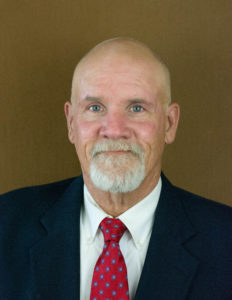Each year this particular topic—safe operation of forklifts—is overlooked by too many, to the detriment of the everyday worker. There are numerous people who are accustomed to operating a forklift. However, there are significantly fewer people formally trained and certified in forklift operations. This fact in and of itself illustrates a huge gap. Due to the nature of forklift operations, and to the appeal they hold for amateurs for what they perceive as an appealing ease of operation, the need is all the greater for formal training by a certified trainer and a certified entity. In-house training is fine as supplemental training, to address needs, policies, and procedures in addition to application of the tasks specific to each application that are pertinent to your business needs. The interest in saving money by administering training in-house as the sole source of training, however, throws the liability solely on the organization. I recommend third party certification and documented in-house training as well.
I remember a remark from a supervisor who said, and I quote, “I can train a monkey how to operate a forklift properly, in three days, if the monkey pays attention!” Regardless of your experience in the oilfield, or your inflated sense of expertise, the statement is not funny or witty in any way, and I myself did not consider it the least amusing. Nor was I even remotely sold on this supervisor’s judgement, professionalism, or ability to train someone on a forklift. Needless to say, soon after that, the supervisor was offered an opportunity to seek employment elsewhere. His attitude was cavalier and unnecessary.
We, the professionals in the oilfield, understand that money drives most decisions. We have to make a profit. Regardless of if it is dealing with EBITDA or P&L, the reason we work is to earn a living. Shortcuts to proper training do exist. Even if you’ve been in the business as long as I have, or are a newbie just graduating from college, it doesn’t take a rocket scientist to figure out that companies and employees in the oilfield are in it to make money. I am also aware that most companies spend about the same percentage on safety in large and small companies, and it is usually incredibly underwhelming, as opposed to other departments. I always sarcastically joke about the slogan, “Safety first!” Usually, safety is the first place to cut expenses, or safety men are among the first to go in downturns.
My point is that accidents with forklifts are usually catastrophic—vis a vis, electrocution, load shifts, unknown personnel in the work area, and other finite hazards not mentioned. This article is not served up as a substitute for training. This article is shared only to heighten awareness of how hazardous forklift operation is. Forklift mishaps usually involve more than just a dropped load. There are electrical high lines, blind spots, and load shifts, and the litany of accidents is chock full of human error. Usually, the load is too heavy to lift by people, dollies, or even chain hoists. The forklift is a valuable tool—but only when properly maintained and the personnel are properly trained.
Understand that I am aware of the training costs. I understand the employee turnover is usually higher than most industries, at least that is my perception. The last point I’d like to make regarding safety is the actual maintenance of the forklift. I don’t know how many forklifts I’ve inspected for which the seatbelt has not been utilized or is even non-existent. Another critical inspection point is fully functional mirrors. The reverse, backing up, reverse indicator lights, are usually nonfunctional. Horns are seldom used or functional. Load shifts, blind spots, and ear plugs are causes of injuries. And yet we have inspections done ritualistically on our street vehicles.
I digress. That’s my bad habit. I usually get long-winded driving a point home, especially when I start with a safety conversation with my wife. One of these days she will give herself an eye injury from rolling her eyes at me. Then I will have a recordable injury on my record. (Just kidding dear.)
If you wish to challenge how many injuries and fatalities are caused by forklifts, please give me a call or email me. Better yet, consult with your safety representative.
For the past five years, I’ve ended these columns with a certain saying that employs a baseball analogy. It is time for all of us to try new ideas, new strategies, and new ways to emphasize safety. The goal is for all employees to reach home safely. —Dusty
Dusty Roach is a safety professional based in Midland. He is also a public speaker on subjects of leadership and safety, and he maintains a personal website at dustyroach.com.











